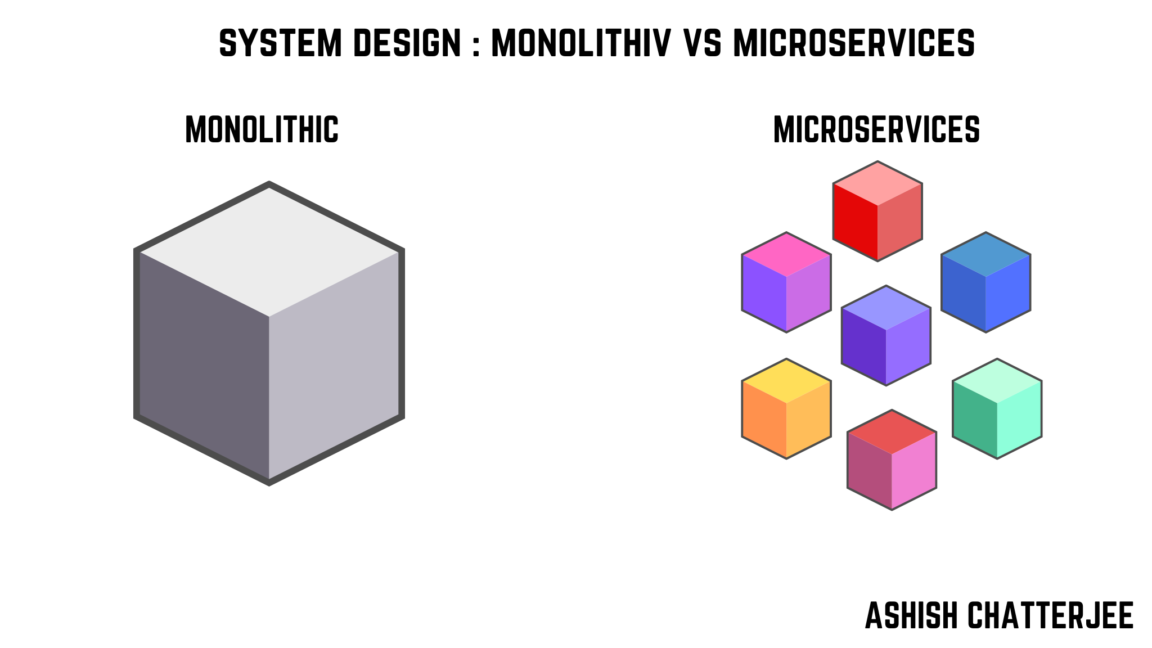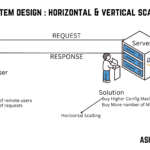In modern software development, choosing the right architecture is crucial for scalability, maintainability, and performance. Two widely used architectures are Monolithic and Microservices. While monolithic applications are simple to develop and deploy, microservices offer flexibility and scalability. This blog will discuss their differences, pros and cons, and how to handle multiple APIs in microservices by introducing an orchestration service or routing service.
What is Monolithic Architecture?
A monolithic architecture is a traditional approach where the entire application is built as a single unit. All components, including the UI, business logic, and database interactions, reside within a single codebase.

Example
An e-commerce website built as a single application handling user authentication, product catalog, payments, and order management in one place.
Pros of Monolithic Architecture
✔ Simple Deployment – Only one package to deploy. ✔ Easier Debugging – Everything is in one place, making it simpler to test. ✔ Performance Optimization – No network latency between components. ✔ Lower Infrastructure Costs – Requires fewer resources to run.
Cons of Monolithic Architecture
✖ Scalability Issues – Difficult to scale individual components. ✖ Hard to Maintain – As the application grows, making changes becomes complex. ✖ Single Point of Failure – A bug in one part can bring down the entire system. ✖ Slow Deployment – Any small change requires rebuilding and redeploying the entire application.
What is Microservices Architecture?
A microservices architecture breaks down an application into smaller, loosely coupled services that communicate via APIs. Each microservice is responsible for a specific function and can be developed, deployed, and scaled independently.
Example
An e-commerce platform can be split into multiple microservices:
- User Service – Handles authentication and user data.
- Product Service – Manages product details and inventory.
- Order Service – Processes customer orders.
- Payment Service – Handles payments and transactions.
Pros of Microservices Architecture
✔ Scalability – Individual components can be scaled separately. ✔ Faster Development – Teams can work independently on different services. ✔ Fault Isolation – A failure in one service does not affect others. ✔ Technology Flexibility – Each service can use different programming languages or databases. ✔ Continuous Deployment – Services can be updated and deployed independently.
Cons of Microservices Architecture
✖ Complex Management – Requires orchestration tools like Kubernetes. ✖ Increased Latency – Communication between services introduces network overhead. ✖ Data Consistency Issues – Managing transactions across services is challenging. ✖ Higher Infrastructure Costs – More services mean more servers, databases, and monitoring tools.
Handling Multiple APIs in Microservices: Introducing an Orchestration or Routing Service
One challenge when migrating to microservices is managing multiple APIs efficiently. Without a structured approach, API calls can become complex, leading to performance bottlenecks and error-handling issues. To solve this, we introduce an orchestration service or routing service.
1. API Gateway (Routing Service)
An API Gateway acts as a single entry point for all API requests, routing them to the appropriate microservices.
Key Features:
- Request Routing – Directs incoming requests to the correct microservice.
- Load Balancing – Distributes traffic among multiple instances.
- Rate Limiting – Prevents overloading services by controlling request rates.
- Authentication & Authorization – Centralizes security policies.
- Caching – Reduces redundant requests to improve performance.
Popular API Gateways:
- Kong
- NGINX API Gateway
- Amazon API Gateway
- Zuul (Netflix)
2. Orchestration Service
In some cases, complex workflows require multiple microservices to coordinate operations. Instead of each service calling others directly, an orchestration service manages the execution flow.
Key Features:
- Workflow Management – Defines execution sequences for dependent microservices.
- Error Handling & Retries – Automatically retries failed API calls.
- Service Composition – Aggregates responses from multiple services.
- Logging & Monitoring – Provides insights into service performance.
Popular Orchestration Tools:
- Kubernetes (for containerized microservices)
- Apache Airflow
- Camunda (for business process workflows)
- Netflix Conductor
Caching in Microservices
To optimize API performance, caching mechanisms reduce the load on microservices and databases.
Types of Caching:
- Edge Caching – CDN (e.g., Cloudflare) caches responses closer to users.
- In-Memory Caching – Redis or Memcached stores frequently accessed data.
- Database Query Caching – Caches query results to reduce database load.
Caching significantly improves response times and reduces API calls, making microservices more efficient.
Error Handling Strategies in Microservices
Microservices need robust error-handling mechanisms to maintain reliability. Common strategies include:
- Retry Mechanisms – Automatically retry failed requests (e.g., exponential backoff).
- Circuit Breaker Pattern – Prevents cascading failures by stopping repeated failed calls (e.g., Netflix Hystrix).
- Logging & Monitoring – Tools like ELK Stack, Prometheus, and Jaeger track API errors and performance.
Comparison Table: Monolithic vs. Microservices
| Feature | Monolithic Architecture | Microservices Architecture |
|---|---|---|
| Deployment | Entire application deployed together | Independent service deployments |
| Scalability | Limited, scales as a whole | Scalable per service |
| Fault Tolerance | A failure can bring down the whole app | Isolated failures don’t impact other services |
| Technology Stack | Single stack for the whole app | Different technologies per service |
| Maintenance | Becomes difficult as app grows | Easier with independent services |
| Development Speed | Slows down as the codebase grows | Faster due to independent teams |
| Infrastructure Cost | Lower in the short term | Higher due to multiple instances |
Final Thoughts
Migrating from a monolithic to a microservices architecture brings flexibility, scalability, and fault tolerance, but it introduces complexity in managing multiple APIs. Using an API Gateway for routing and an orchestration service for workflow management ensures smooth operation.
To further enhance microservices performance, caching and error handling mechanisms like retries and circuit breakers should be implemented.
💡 Which architecture do you use in your projects? Share your experiences in the comments! 🚀






GIPHY App Key not set. Please check settings